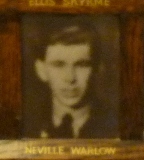Tenby Junior Community School contains a memorial which commemorates the pupils of Tenby Council School who fell during WW2, and also a memorial with portrait photos of the fallen. The photographs of the memorials are courtesy of Mike Berrell. This page commemorates these pupils of Tenby Council School.
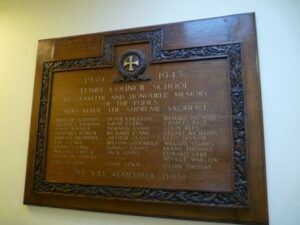
World War Two, 1939-1945
Bernard Ollin Badham, Stoker 2nd Class, D/KX. 164530, Royal Navy. Bernard was the son of William Ollin Badham and Doris Mary Badham, of Saundersfoot, and served with the Royal Navy aboard H.M.L.C.S. (L) 255. This was a Landing Craft, which was designated His Majesty’s Landing Craft Support (Small), No. 255. Bernard sadly died on 17 October 1943, aged just 20, and is buried at Saundersfoot (Bethesda) Presbyterian Church of Wales Chapelyard.
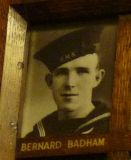
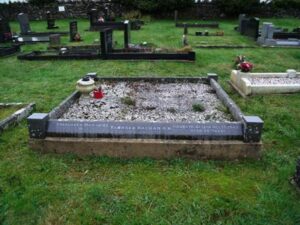
Geoffrey David Badham, Boy 1st Class, D/JX.171749, Royal Navy. Geoff was the son of William Ollin Badham and Doris Mary Badham, of Saundersfoot, and served in the Royal Navy, aboard HMS Maori. Maori was a Tribal Class destroyer that had been launched on 2 September 1937. She was involved in the pursuit of the Bismarck, and served with the 4th Cruiser Squadron, which was part of the Mediterranean Fleet, at the Battle of Cape Bon, off the coast of Tunisia during December, 1941. Geoffrey may have been injured during the Battle, as he died just days later at Alexandria, on 30 December 1941, aged just 17, and is buried at Alexandria (Hadra) War Memorial Cemetery. The Maori was finally sunk while anchored at Malta on 12 February 1942, when she went down with the loss of one crew member.
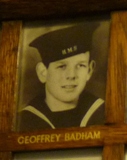
David Robert Booker, Sergeant (Air Bomber), 1413457, Royal Air Force Volunteer Reserve. David was born in India on 28 February 1923, the son of Arthur Booker, an engineer, and Mary Booker. In May 1926 the family returned home from India and settled back at Osborne House, Harris Street, Tenby. David was educated at Greenhill Grammar School and at Christ College. He enlisted into the Royal Air Force Volunteer reserve soon after the outbreak of war and after training as an Air Bomber was posted to 156 Squadron, Royal Air Force, which was part of the elite Pathfinder Force, armed with the Avro Lancaster heavy bomber. David was taking part in his third mission when his Lancaster, serial EE118, took off from RAF Warboys on 29 September 1943, bound for Bochum. The crew found their target and returned home, but sadly crashed near Downham Market, Norfolk on the return leg, killing most of the crew, including David. His body was taken back to Tenby, where he was laid to rest at St. Mary’s Church Cemetery.
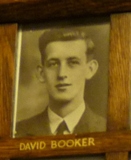
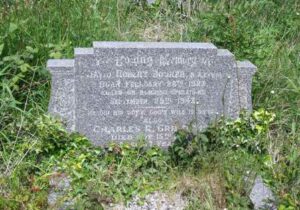
Geoffrey Hugh Bowen, Flying Officer (Pilot), 161261, Royal Air Force Volunteer Reserve. Geoffrey was the son of Percival and Mary A. Bowen (nee Smith), of West Cross, Swansea. He was educated at Tenby Council School and at Greenhill School prior to enlisting into the Royal Air Force. Geoffrey received a commission as a Pilot Officer on 27 October 1943. He was killed in an aeroplane crash at Melton Mowbray on 13 May 1944, aged 22, and is buried at Swansea (Oystermouth) Cemetery.
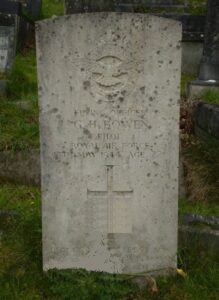
Harold Felix Brumell, Ordinary Signalman, C/JX 176257, Royal Navy. Harold was the son of Felix Harold and Jane Brumell, of Walmer, Kent. He was educated at Tenby Council School and at Greenhill School prior to working for H.M. Customs and Excise. At the outbreak of war, Harold enlisted into the Royal Navy, where he served aboard HM Trawler Waveflower. Harold was among 14 men lost when Waveflower was sunk after striking a mine off Suffolk on 22 October 1940. He was 22 years old, and is commemorated on the Chatham Naval Memorial, Kent.
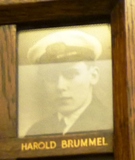
Eric Henry Clark, Cabin Boy, Merchant Navy. Eric was born at Narberth in 1922, the son of Robert Charles Clark and Clara Elizabeth Elderton Clark. Robert had moved the family to Tenby during the Great War, where he was an instructor with the local Royal Garrison Artillery. Eric was educated at Greenhill School, before joining the Merchant Navy, and served aboard S.S. Mill Hill, a Newcastle-on-Tyne registered cargo vessel. On 16 August 1940 Mill Hill left Halifax, Nova Scotia as a member of convoy HX-66A laden with pig iron and scrap steel, bound for Middlesbrough. Early in the morning of 30 August 1940, she was 58 miles off Cape Wrath in the north of Scotland, when she was torpedoed by the German Submarine U-32, sinking within a few minutes with the loss of all hands. Eric was just 18 years old when he died that day, and is commemorated alongside his fellow crew-members on the Tower Hill Memorial, London.
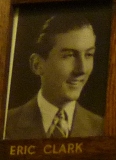
Lionel Elderton Clark, Assistant Cook, 118385, Naval Auxiliary Personnel (Merchant Navy). Lionel was born in Sussex in 1916, the son of Robert Charles Clark and Clara Elizabeth Elderton Clark. Robert had moved the family to Tenby during the Great War, where he was an instructor with the local Royal Garrison Artillery. Lionel was educated at Tenby Council School and Greenhill School, before joining the Merchant Navy, and served aboard HMS Jervis Bay as an Assistant Cook. Jervis Bay was a liner which had been converted into an Armed Merchant Cruiser in August 1939. On 5 November 1940, she was the sole escort for the 37 ship Convoy HX-84 from Halifax, Nova Scotia to Britain, when the convoy encountered the Pocket Battleship Admiral Scheer. The convoy scattered, and Jervis Bay set a course straight towards the German warship to draw its fire. Jervis Bay was hopelessly outmatched, and was sunk in the engagement. Lionel was killed in the sinking that day. He was 23 years old, and is commemorated on the Liverpool Naval Memorial. His brother, Eric Henry Clark also fell.
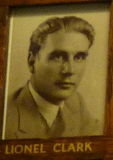
William Robert Frederick Creese, Lance Bombardier, 858954, Royal Artillery. William was the son of Stephen and Florence Creese, of 8, Jones Terrace, Tenby. He married Elisabeth Ann Pullin, of Tenby in 1934. He served with 17 Medium Regiment, Royal Artillery, which fought in North Africa, before taking part in the invasion of Italy. William was killed in Italy on 3 May 1945. He was 31 years old, and is buried at Bologna War Cemetery, Italy.
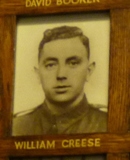
Kenneth Arthur Diment, Craftsman, 7588455, Royal Electrical and Mechanical Engineers. Kenneth was the son of Captain John Bennett Diment and Winnifred Mabel Diment (nee Pitkin) of Tenby. He served during the war with the Royal Electrical and Mechanical Engineers, but sadly little else is known of him. Kenneth died on 30 September 1945, aged 24, and is buried at Tenby (St. Mary) Church Cemetery.
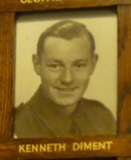
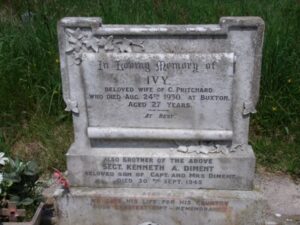
Peter James Emerton, Squadron Leader (Pilot), 37762, Royal Air Force. Peter was the son of Henry Wilfred Emerton and of Ethel May Emerton (nee Field). He was educated at Tenby Council School, prior to marrying Gwynneth Nina Harris, and the couple lived at Sheerness, Kent. Peter had enlisted into the Royal Air Force prior to the war, where he trained as a Pilot. On 14 November 1943, Peter was the Pilot of Halifaz DG-230 which took off from its base at Marston Moor for an air-test. Soon after take off the aircraft’s two starboard engines failed and the aircraft crashed into a pond at Kirk Hammerton, killing four of the five man crew. Peter was one of the dead. He was 26 years old, and is buried at Aldershot Military Cemetery.
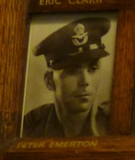
David Gwynne Evans, Flying Officer (Pilot), 132703, Royal Air Force Volunteer Reserve. David was the son of Sydney Charles and Evelyn Caroline Evans, of Hillside, Greenhill Avenue, Tenby. He was educated at Greenhill School before enlisting into the Royal Navy, training as an Engine Room Artificer at Portsmouth. David then became interested in flying, and left the Royal Navy to train as a Pilot with the Royal Air Force Volunteer Reserve. David then learnt to fly in Canada, with the Empire Air Training School, alongside David Booker from Tenby. Upon his return, he served as a Pilot with 86 Squadron, RAF, which was an anti shipping squadron, equipped with the Consolidated Liberator V. On 23 October 1943, David was co-pilot aboard Liberator FL954, which was detailed for convoy escort duty in the Atlantic. The aircraft took off but soon developed technical problems, and crashed at Lough Foyle, County Derry, Ireland, killing all eight of the crew. David was 22 years old, and was brought home to be buried at Tenby (St. Mary) Church Cemetery.
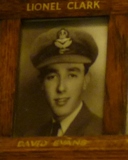
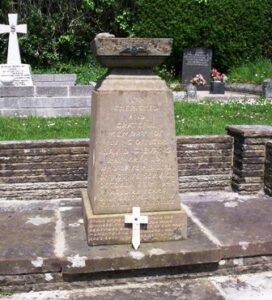
Norman John Evans, Captain, 193795, the Welch Regiment. Norman was born on 15 August 1916, the son of John Henry Tennent Evans and Elizabeth Evans (nee Badham), of 33, Brewery Street, Pembroke Dock. The family then moved to 19, Trafalgar Road, Tenby. Norman was originally commissioned from the Welsh Guards into the Welch Regiment on 11 July 1941, probably after serving with the Welsh Guards during the fall of France in 1940. He was attached to the 9th Battalion, Cameronians for the invasion of Normandy. The battalion was attached to 46 Brigade, 15th (Scottish) Division, and landed on 17 June 1944 onto the Normandy beaches. In the coming weeks, the Division took part in the break out from the beaches, and took part in heavy fighting. Norman was killed on 11 July 1944, aged 27. He is buried at Beny-Sur-Mer Canadian War Cemetery, Reviers, France. His brother Richard Charles Evans also fell.
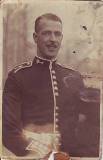
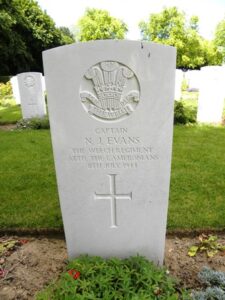
Richard Charles Evans, Private, 14206505, the Somerset Light Infantry (Prince Albert’s). Richard served with the 4th Battalion, Somerset Light Infantry, which was attached to 129 Brigade, 43rd (Wessex) Division. The brigade landed on the Normandy beaches on 23 June 1944, and took part in the break out from the beach-head. Richard was killed just days after landing, on 29 June 1944. He was 21 years old, and is buried at St. Manvieu War Cemetery, Cheux, France. He was 20 years old. His brother Norman John Evans also fell.
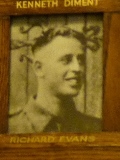
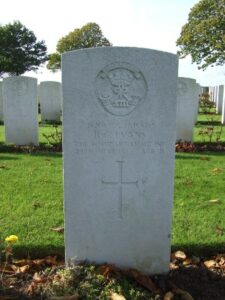
Arthur Richard John Glass, Corporal, 5569252, Royal Army Ordnance Corps. Arthur was born in Swindon on 2 May 1913, the son of Arthur Glass and Margaret Ann Glass (nee Brooking), of 99, Roseberry Street. His father, a soldier, was killed in Flanders in October 1914, so his mother moved back to her native Tenby, setting up home at 12, The Flats, Bridge Street. Arthur was educated at Tenby Council School. Following the outbreak of war he enlisted into the army and joined the Royal Army Ordnance Corps, attached to the 53rd (Welsh) Division. Arthur served throughout the entire duration of the war, and was still serving after the surrender of Germany and Japan. Unfortunately his wartime service appears to have taken its toll on his health, and Arthur died at Sealyham Hospital, St. Dogwells on 9 October 1946. The 33-year-old was buried in St. Mary’s Church Cemetery, Tenby five days later. Arthur is not commemorated as a casualty of war by the CWGC.
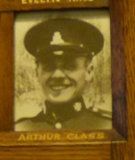
William John Goodridge, Serjeant, 3850764, Royal Artillery. William was the son of William John and Margarette Ellenore Goodridge, of Tenby. He married Ada Lucy Holmes, of Reading, Berkshire in 1933. He served with 551 Coast Regiment, Royal Artillery. William must have been killed in an accident, as another man of his battery died the same day as him, on Sunday 10 May 1942. William was 36 years old, and is buried at Reading (Henley Road) Cemetery.
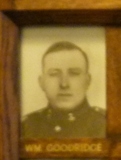
Donald Edward Grant, Pilot Officer, 133564, Royal Air Force Volunteer Reserve. Donald was the son of Thomas Edward and Edith Annie Grant, of Totton, Hampshire. He married Mary Ann Clisby in 1941. He served with 102 Squadron, RAF, which was a bomber Squadron, one of its officers being George Leonard Cheshire, VC, and was based at RAF Pocklington, flying the Lancaster. Donald was killed on a bombing mission over Germany on 5 March 1943. He was 24 years old, and is commemorated on the Runnymede Memorial, Surrey.
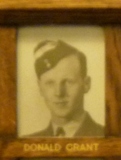
Desmond Charles James Calcutt John, Guardsman, 2735127, Welsh Guards. Desmond was the son of Harry John and Veneda Rachiel John (nee Calcutt), of Tenby. He was a regular soldier, serving with the 1st Battalion, Welsh Guards at the outbreak of war. The Welsh Guards moved to France as part of the BEF, and took up positions in the city of Arras on 17 May 1940. In May 1940, the Germans launched their Blitzkrieg into France, and Arras was bombed heavily on 19 May, with heavy fighting following. On 24 May the Welsh Guards were ordered to withdraw, and began a fighting retreat towards Dunkirk. Desmond was killed during a brief, but fierce, rearguard action at West Cappel on 29 May 1940. The German advance was delayed, but at a heavy cost to the Welsh Guards. Desmond was 20 years old, and is buried at West Cappel Churchyard, Belgium.
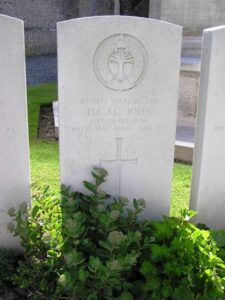
David John Johns, Flying Officer, 202780, Royal Air Force Volunteer Reserve. David was the son of David John and Emily Johns of Tenby, and the husband of Nancy Johns, of Neyland. He was commissioned as a Flying Officer from Flight Sergeant on 14 March 1946 and served as a Pilot with 511 Squadron, Royal Air Force, which was a specialist long range unit, equipped with the Avro York, and flew from Britain to India as a Trooping flight, later taking part in the Berlin Airlift as part of Transport Command. David was killed during a crash on 6 October 1946 while flying aboard Avro York I, Serial MW125 which crashed about 100 miles west of Penang, with the loss of 21 lives. He was 28 years old, and is commemorated on the Runnymede Memorial, Surrey.
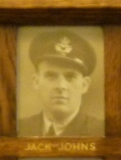
Miss Evaline Annie King, Civilian Air Raid Victim. Evaline was born at Neyland on 20 January 1917, the daughter of Herbert Edward King and Eva King (nee Davies). The family moved to Tenby when Evaline was young. During the war Evaline lived at 111, Banstead Road, Caterham. She was 24 years old when she was killed during the German Blitz on 16 April 1941.
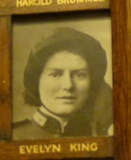
Louise Sinnatt (nee Lewis), Civilian Concentration Camp Victim. Louise was the daughter of Mrs. E. Turner Lewis, of 3 Cresswell Street, Tenby. She had married Lieutenant John Anthony Hamilton Sinnatt, of the Royal Artillery in 1937. The family then embarked for the Far East following John’s posting to Sumatra. Louise was taken prisoner, along with John and their baby son, during the Japanese invasion of Sumatra, and died at Muntok, Banka Island, Sumatra on 23 February 1945, leaving her six year old son to fend for himself until he sadly died on 14 April. Louise was 32 years old.
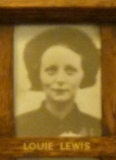
Richard Charles Andrew Nicholl, Marine, PLY/X 1995, Royal Marines. Richard was the son of Charles Thomas Nicholl and Mary Sophia Nicholl (nee Meyrick), of Tenby. He served aboard the aircraft carrier HMS Glorious. On the afternoon of Saturday 8 June 1940 HMS Glorious and her escorting destroyers HMS Acasta and HMS Ardent were intercepted in the Norwegian Sea by the German battle-cruisers Gneisenau and Scharnhorst while returning from supporting the British forces in Norway. The three British ships were sunk by gunfire in a little over two hours, with the loss of over 1,500 officers and men. Richard was one of the missing. He was 21 years old, and is commemorated on the Plymouth Naval Memorial, Devon.
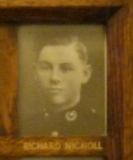
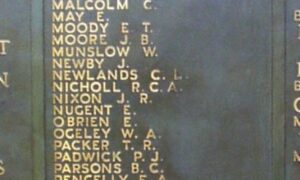
Charles Howard Page, Plumber 3rd Class, D/MX 66337, Royal Navy. Charles was the son of Charles and Flora Page, of Tenby. He married Annie Jones of Llandebie in 1938. He served aboard H.M.S. Charybdis, which was a Dido Class Destroyer, and was part of the Home Fleet. She transferred to the North Atlantic Command in April 1942, and set sail for the Mediterranean, where she took part in escort duties on the Malta Convoys, and aided in the North African Campaign, and at the landings at Salerno. She returned to the Atlantic, where on 21 October 1943 was ordered to intercept a German Supply ship. She was hit by two torpedoes on 23 October 1943, fired from two German torpedo boats, and sank with the loss of 462 men. Charles was one of these men, and was 33 years old. He is remembered on the Plymouth Naval Memorial.
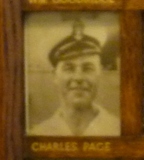
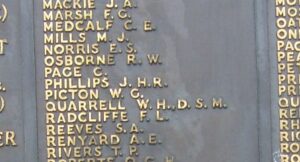
Colin Aveston Rees, Ordinary Seaman, D/JX. 651040, Royal Navy. Colin was the son of George Howard Rees and Sophia Ann Rees (nee Rees), of Pembroke Villas, Tenby, and served aboard the light cruiser HMS Diomede. Diomede had taken part in several naval actions during the early part of the war, but had become obsolete, and was transferred to Rosyth for use as a training vessel. Colin died at Rosyth on 17 January 1944. He was 18 years old, and is buried at Tenby (St. Mary) Church Cemetery.
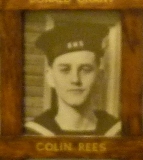
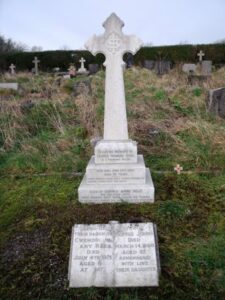
David Ernest Stuart Richards, Aircraftman 2nd Class, 1153338, Royal Air Force Volunteer Reserve. David was the son of Thomas H. Richards and Emily Richards, of New Hedges. He served with the Royal Air Force. He died in Pembrokeshire on 6 September 1941, aged 20, around the time of the Battle of Britain, and is buried at Tenby (St. Mary) Church Cemetery.
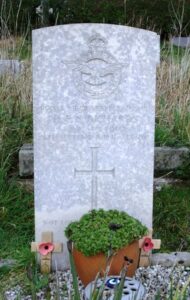
Ellis Trevor Skyrm, Craftsman, 7596453, Royal Electrical and Mechanical Engineers. Ellis was the son of Richard and Priscilla Skyrm, of Penally. He was educated at Tenby Council School, prior to marrying Mary Mildred Beams at Bootle in 1941. Little is yet known of Ellis’ service during the war, but he was a Craftsman with the Royal Electrical and Mechanical Engineers, and died in Northumberland on 15 November 1942, aged 25. Ellis is buried at Penally (St. Nicholas) Churchyard. Ellis is not commemorated on the main Tenby War Memorial, but at his former School, and at Penally.
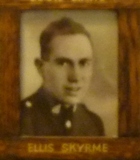
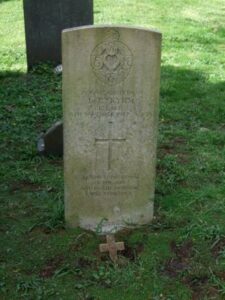
William Henry Stubbs, Petty Officer, D/JX. 130395, Royal Navy. William was the son of William Henry and Elizabeth Ann Stubbs, of Tenby, and was known to his friends as Ginger. He had married Nancy Davies prior to the outbreak of war, and lived with her at Penally. Ginger served with the Royal Navy, as a Petty Officer, aboard HMS Cattistock, a Type I ‘Hunt’ Class Destroyer. Cattistock had been launched on 22 February 1940, and took part in the evacuation of troops from Le Havre during August 1940, receiving heavy damage. On 29 August 1944, William was aboard HMS Cattistock, while she was on duty in the Channel, alongside the frigate HMS Rettalick. The ships were intercepted by a group of German vessels, who were evacuating Le Havre. In the subsequent battle, the Cattistock received over 20 direct hits, including one to the bridge which killed the ship’s captain and several of her crew, including Ginger. His daughter was just four months old when he died and his wife Nancy never remarried. A plaque in memory of Ginger was placed on the wall of Tenby’s Fisherman’s Chapel, by the harbour, by his widow. William was 32 years old when he died that day, and his body was brought home to be buried at St. Mary Church Cemetery, Tenby.
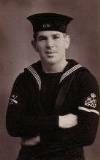
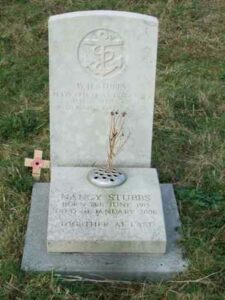
Frank Gilbert Thomas, Guardsman, 2738575, Welsh Guards. Frank was the son of Charles Hermann D Thomas and Alice Martha Thomas (nee Lovatt), of Tenby. He served with the 1st Battalion, Welsh Guards. In June 1944 the 1st Battalion Welsh Guards landed in Normandy, attached to 32nd Guards Brigade, Guards Armoured Division. During the coming weeks, the Welsh Guards took part in the break-out from the Normandy beach-head, and in the drive into Belgium. Frank was killed in Belgium on 5 September 1944. He was 19 years old, and is buried at Auderghem (Oudergem) Communal Cemetery, Belgium.
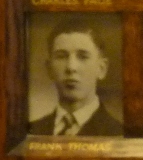
Lillian Thomas. Lillian is commemorated on the Tenby Council School Memorial, but her identity has not yet been identified.
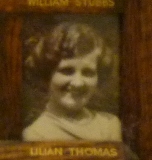
Edward George Vare, Serjeant, 7880459, Royal Armoured Corps. Edward was the son of Percy and Elizabeth Mary Vare of Penally. He had married in 1935, and lived with his wife Maud Vare, at Waungilwen, Cardiganshire. Edward served with the 12th Royal Tank Regiment, Royal Armoured Corps, which fought in North Africa, before taking part in the invasions of Sicily and Italy. Edward was killed in action in Tunis on 6 May 1943. He was 32 years old, and is buried at Massicault War Cemetery, Medjez-el-Bab, Tunis.
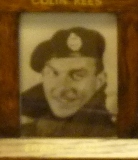
Neville Phillip Warlow, Sergeant (Air Gunner), Royal Air Force. Neville was born in Tenby in 1924, the son of John Warlow and Maud Alice Warlow (nee Chaplin). The family later moved to Swanscombe, Kent, and served with 103 Squadron, RAF. The squadron was a heavy bomber unit, equipped with the Avro Lancaster, and based at RAF Elsham Wolds in Lincolnshire. Neville was killed during a bombing raid over Germany on 28 May 1944. He was 19 years old, and is commemorated on the Runnymede Memorial, Surrey.
